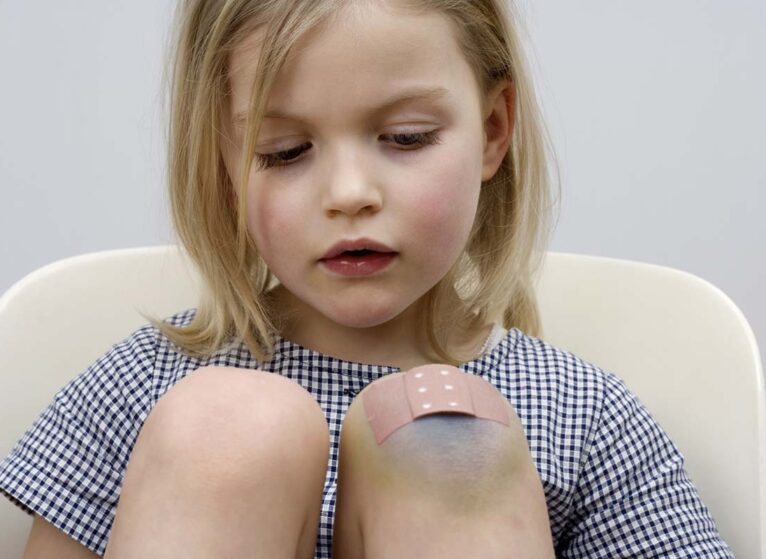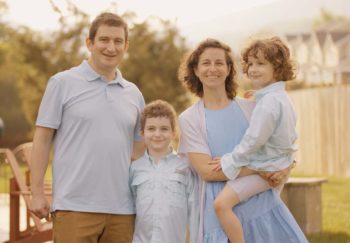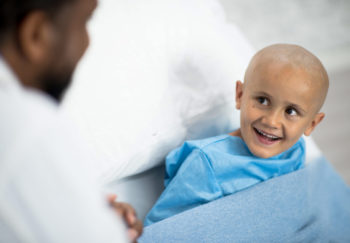Bumps and bruises are a part of growing up. But these can also be the first sign of childhood cancer. Further complicating things, for some cancers the average age of diagnosis can be as young as 18 months. Well before most children are talking.
“Nobody ever expects their child to develop a cancer,” shares pediatric oncologist Michael Engel, MD. And yet many children will. An estimated 14,910 children and adolescents aged 0 to 19 will be diagnosed with cancer in 2024. That’s about 1 in 285 children in the U.S.
Childhood cancer is rarer and more treatable than cancer in adults. But it does share one important trait. Early diagnosis leads to better outcomes.
Why Do Children Get Cancer?
For adults, we base cancer screenings on risk factors. If you smoked a lot, we recommend lung cancer screenings. So, what behavior puts children at risk for cancer? What do parents do or not do that affects risk?
“So every parent, I think, asks themselves two very basic questions when they learn their kid has a cancer. What did I do wrong? Or what didn’t I do right? They need some permission to know that their kid's cancer was not because of something they did or something they didn’t do,” Engel says.
Unlike cancers in adults, childhood cancers are not strongly linked to lifestyle. The most common types of childhood cancers include leukemia, brain tumors, lymphomas, and neuroblastoma — all cancers that usually start in cell changes that happen before birth.
Instead of preventative screenings, finding childhood cancer early depends on identifying warning signs. So, what are the early signs of childhood cancer? And how do you know when it’s time to take your child to the doctor?
Early Childhood Cancer Signs
Some of the early childhood cancer signs can be caused by other, more common illnesses and ailments. But there's a question of both scale and number with these. If your child is showing multiple early signs, it may be time to get them care.
Unexplained Weight Loss
Children may lose weight during illnesses like the flu but also because of cancer. This can be due to nausea and vomiting, but it can also just be caused by how much harder their body is having to work.
In general, unless your child is on a special diet, they should be continually gaining weight as they grow.
Fatigue and Paleness
Constant fatigue, weakness, and paleness may indicate anemia. This is a common sign in children with leukemia, a type of blood cancer. Fatigue isn’t just tired, and if your teenager sleeps past their alarm, that’s not a cause for concern. But if they’re too tired to enjoy activities,and it doesn’t get better with more sleep, that’s concerning.
Persistent Pain
Cancer can cause chronic pain, especially in the bones or joints. Early bone cancer can cause unexplained leg pain that only affects one side of the body. Sometimes, if the cancer is more advanced, doctors may find it when treating a broken bone.
Frequent Infections
Children with cancer often have weakened immune systems. This leads to repeat infections that are hard to treat. Anna Pitts was plagued with ear infections before her leukemia diagnosis as a toddler.
Hard & Swollen Tummy
Baby and toddler tummies are adorably huge. But they’re soft, change frequently, and aren’t painful to touch. If your young child develops a tummy that’s hard and swollen, that’s a sure sign that something needs to be checked out.
Small Red Dots
A sudden burst of red dots that look almost like freckles are called petechiae. And they’re caused when small amounts of blood are released under the skin. If your child has been roughhousing recently, they might show up. But if there’s no cause or they’re in an unusual location, they could relate to a problem with platelets, the things that help blood clot. This can be a sign of blood cancer, like leukemia.
Vision Changes
Brain and spinal cord tumors make up about 25% of childhood cancers. While a pre-verbal child can’t tell you that they’re getting blurred vision, there are signs. Your child may have unusual eye movements, have trouble finding favorite toys, or show other signs of eye strain.
Headaches
If your child is telling you about frequent headaches out of the blue, it’s a red flag. While this is a frequent cancer sign, it’s also just not good to feel pain every single day. In pre-verbal children, while they can’t tell you about a headache, they may be more fussy than usual.
When to Seek Medical Advice to Rule Out Cancer
Worried About Your Child's Symptoms?
Your pediatrician can help you figure out your next steps, so you can find the answers you need.
The thing about any of these symptoms is that even if they’re not cancer, they’re still concerning. Whether your child’s fatigue is a sign of cancer or a simple vitamin deficiency, you’ll both feel better when it’s fixed.
But there are times when it’s more important to make an appointment quickly.
Persistent Symptoms
If symptoms like pain, fatigue, or weight loss continue for more than a couple of weeks, call the doctor. If you can, keep a record of when these problems first started.
Unexplained Signs
If your child is up all night, you’d expect them to be fatigued. Likewise, a fever caused by a viral illness isn’t as alarming as one with no cause. If these signs like tiredness or fevers can’t be explained by changes in your child’s life, then they’re much more concerning.
Parental Intuition
Anna Pitts’ parents knew something was wrong when their toddler, who loved to dance, suddenly stopped walking. Today, after treatment at UVA Health Children’s, Anna is a healthy teenager who loves gymnastics.
Anna’s parents knew her and followed up on her symptoms. Trust your instinct to know when something isn't right with your child.
Better Outcomes Every Day
An early diagnosis can make all the difference. The prognosis for some of the most common childhood cancers gets better every day.
“Leukemia is one of the great success stories of pediatric oncology over the past 30 years,” says Brian Belyea, MD, UVA Health Children’s pediatric oncologist and researcher. “When I was Anna’s age, the survival rate was 60%. Today, the survival rate for what she had is 90%.”
It's still a hard road. But the sooner the journey starts, the better the outcomes.


